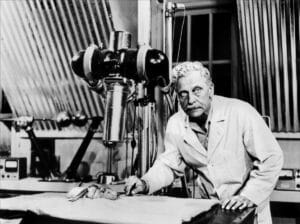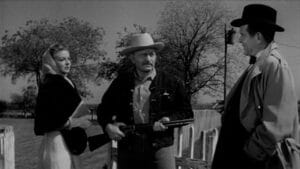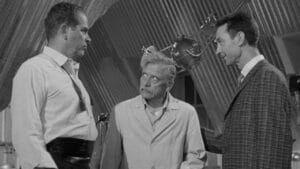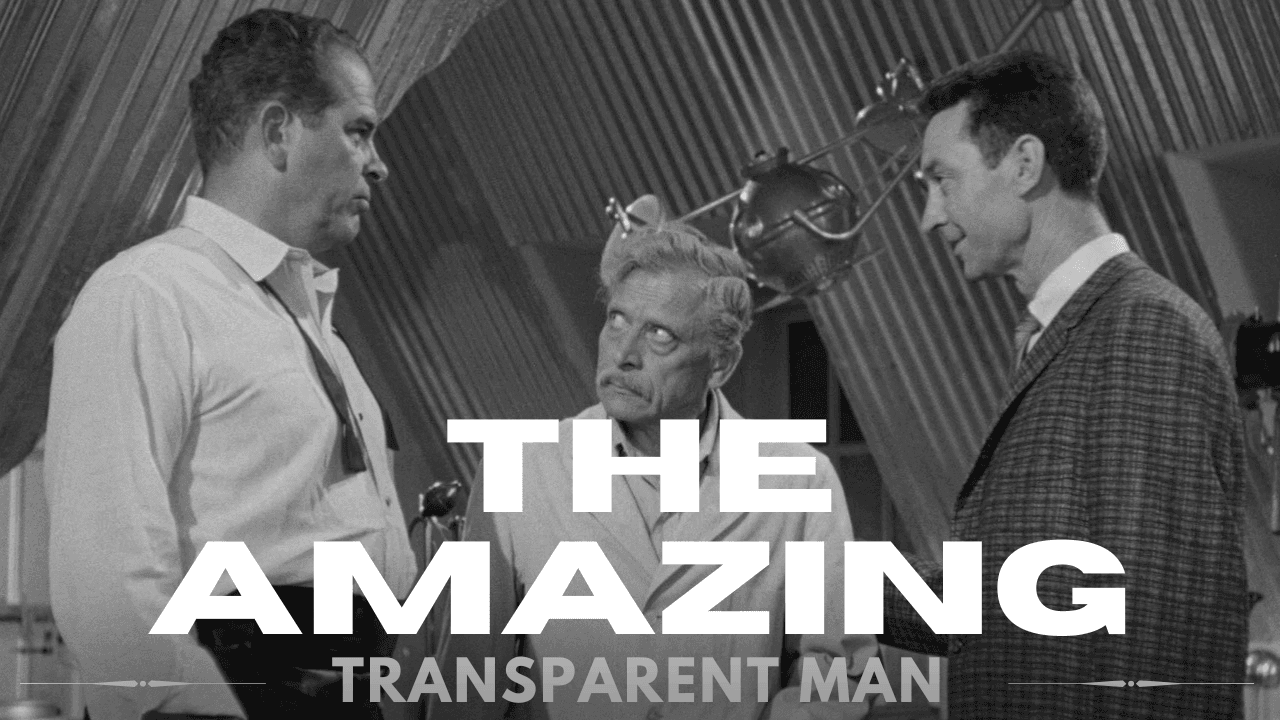A Classic Sci-Fi Thriller Unveiled
Introduction

In the golden age of B-movie sci-fi cinema, few films embody the era’s mix of paranoia, scientific curiosity, and low-budget ingenuity quite like The Amazing Transparent Man (1960).
Directed by Edgar G. Ulmer, a filmmaker known for his ability to craft compelling narratives on shoestring budgets, this film is a fascinating exploration of invisibility, power, and the psychological effects of unchecked ambition.
Blending elements of crime, suspense, and science fiction, The Amazing Transparent Man follows the harrowing story of a disgraced ex-military officer who becomes the subject of a dangerous invisibility experiment.
While the premise is steeped in familiar tropes, the film offers a unique psychological depth that sets it apart from its contemporaries.
In this comprehensive review, we will dissect the film’s plot, analyze its underlying themes, explore the historical context of its production, and evaluate the performances of its lead actors.
Plot Summary

The story follows Joey Faust (Douglas Kennedy), a disgraced former military pilot and convicted criminal, who is broken out of prison by the enigmatic Laura Matson (Marguerite Chapman).
Laura works for Major Paul Krenner (James Griffith), an unscrupulous scientist intent on perfecting the art of invisibility for military applications.
Krenner has forced Dr. Peter Ulof (Ivan Triesault), a reluctant scientist, to develop an invisibility serum derived from radioactive isotopes.
The Major’s plan is simple: use Faust as a guinea pig, turn him invisible, and force him to steal more nuclear materials to refine the process. However, Faust, a seasoned criminal, sees the potential for his own gain and begins to plot his escape.
As the experiment progresses, Faust enjoys his newfound ability, using it to pull off heists and manipulate those around him. However, the serum comes with a heavy price—each use weakens his physical form and exacerbates his mental instability.
What begins as a simple experiment quickly spirals into a tense battle for power and survival.
Themes and Analysis
1. The Dangers of Unchecked Scientific Experimentation
Like many sci-fi films of the 1950s and 60s, The Amazing Transparent Man reflects contemporary fears about scientific advancements, particularly those related to nuclear technology and human experimentation.
Dr. Ulof, a scientist under duress, represents the ethical dilemmas faced by real-world scientists working on morally ambiguous projects.
2. Cold War Paranoia and the Weaponization of Science
Released at the height of the Cold War, the film subtly addresses the fears of invisibility being weaponized as an ultimate espionage tool.
Major Krenner’s obsession with using the serum for military dominance echoes the era’s anxieties surrounding the arms race and covert intelligence operations.
3. The Psychological Toll of Power and Invisibility
What makes The Amazing Transparent Man stand out from other invisibility-themed films is its focus on the psychological impact of the ability.
Unlike H.G. Wells’ The Invisible Man, where the protagonist is already unhinged, Joey Faust’s descent into madness is gradual. The power to be unseen initially seems like a blessing but quickly transforms into a curse, mirroring classic cautionary tales about the corrupting nature of unchecked power.
Cast and Character Analysis
Douglas Kennedy as Joey Faust
Douglas Kennedy delivers a gripping performance as Joey Faust, bringing a rugged charisma to the role. Kennedy, known for his roles in film noir and Westerns, was adept at playing hardened characters, making him a perfect fit for Faust.
His portrayal captures both the desperation and arrogance of a man who sees invisibility as a means to reclaim power but ultimately loses himself in the process.
Marguerite Chapman as Laura Matson
Marguerite Chapman plays Laura Matson, a woman caught between loyalty and survival. Chapman, a seasoned actress from the 1940s and 50s, had a career spanning both film noir and sci-fi. Her portrayal of Laura adds a layer of depth to the film, as she struggles with her role in Krenner’s plan while gradually developing sympathy for Faust.
Supporting Cast
-
James Griffith as Major Paul Krenner – A ruthless and calculating antagonist who seeks absolute control over the invisibility serum.
-
Ivan Triesault as Dr. Peter Ulof – The reluctant scientist, whose tragic past and moral struggle add emotional weight to the story.
Cinematic Techniques and Special Effects

Given its limited budget, The Amazing Transparent Man relies on practical effects to achieve the illusion of invisibility. While modern audiences may find these effects rudimentary, they were innovative for their time.
The use of double exposure and clever camera tricks effectively create the impression of a man fading in and out of sight.
Ulmer’s direction is particularly effective in crafting tension despite the film’s minimal set designs.
The use of lighting and shadow helps enhance the eerie quality of Faust’s unseen presence, making the most out of the limited resources available.
The Film’s Legacy and Cultural Impact
While The Amazing Transparent Man was not a major blockbuster, it remains a beloved cult classic. Its exploration of invisibility influenced later sci-fi films and television series, and its themes of government conspiracies and unchecked science continue to resonate with audiences today.
The film has been featured in various retrospectives on 1960s sci-fi cinema and is often mentioned alongside other B-movie classics like The Incredible Shrinking Man and The Brain That Wouldn’t Die. Its public domain status has also allowed it to be widely accessible, ensuring its continued presence in film history discussions.
Conclusion: Is The Amazing Transparent Man Worth Watching?
For fans of vintage science fiction and classic B-movies, The Amazing Transparent Man is a must-see. While it may not have the polish of high-budget sci-fi films, its intriguing plot, strong performances, and psychological depth make it a standout entry in the invisibility sub-genre.
If you enjoy films that blend suspense, scientific intrigue, and Cold War paranoia, this movie is worth adding to your watchlist. And for cinephiles interested in the works of Edgar G. Ulmer, it serves as a fascinating study of how a master of low-budget filmmaking could still craft an engaging and thought-provoking narrative.
Final Thoughts
Whether you are a fan of old-school sci-fi, a lover of classic B-movies, or a cinephile exploring Edgar G. Ulmer’s filmography, The Amazing Transparent Man offers an entertaining and thought-provoking experience. It may not be the flashiest film of its era, but its exploration of invisibility, power, and paranoia ensures it remains a fascinating piece of cinematic history.
What are your thoughts on The Amazing Transparent Man? Let us know in the comments below, and don’t forget to share this review with fellow classic film enthusiasts!



